Life
Sign up for our newsletter
We summarize the week's scientific breakthroughs every Thursday.
-
 Genetics
GeneticsA mutation may explain the sudden rise in birth defects from Zika
A mutation in a protein that helps Zika exit cells may play a big role in microcephaly.
-
 Climate
ClimateTropical forests have flipped from sponges to sources of carbon dioxide
Analyses of satellite images suggest that degraded forests now release more carbon than they store.
-
 Genetics
GeneticsAncient boy’s DNA pushes back date of earliest humans
Genes from South African fossils suggest humans emerged close to 300,000 years ago.
By Bruce Bower -
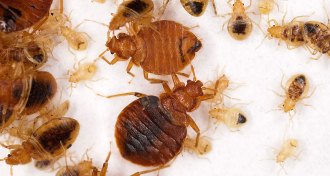 Animals
AnimalsBedbugs may be into dirty laundry
When humans aren’t around, bedbugs go for the next best thing: smelly human laundry.
-
 Paleontology
PaleontologySaber-toothed kittens were born armed to pounce
Even as babies, saber-toothed cats had not only oversized canine teeth but also unusually powerful forelimbs.
-
 Paleontology
PaleontologyThis giant marsupial was a seasonal migrant
A new analysis suggests that Diprotodon optatum, a giant plant-eating marsupial that went extinct about 40,000 years ago, migrated long distances, much like today’s zebras and wildebeests.
-
 Paleontology
PaleontologyThis giant marsupial was a seasonal migrant
The giant, extinct marsupial Diprotodon optatum migrated seasonally, the first marsupial shown to do so.
-
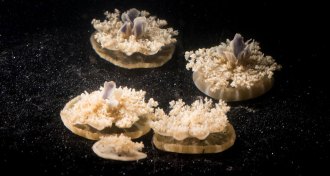 Animals
AnimalsTo test sleep, researchers don’t let sleeping jellyfish lie
Upside-down jellyfish are the first known animals without a brain to enter a sleeplike state.
-
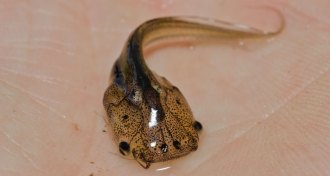 Health & Medicine
Health & MedicineFrom day one, a frog’s developing brain is calling the shots
Frog brains help organize muscle and nerve patterns early in development.
-
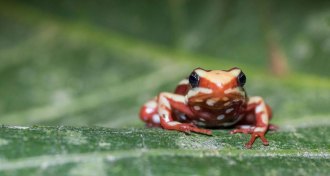 Environment
EnvironmentThe way poison frogs keep from poisoning themselves is complicated
Gaining resistance to one of their own toxins forced some poison dart frogs to make other genetic tweaks, too.
-
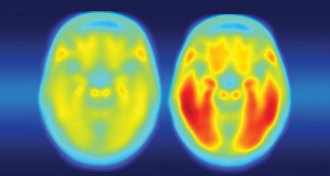 Neuroscience
NeuroscienceGene variant linked to Alzheimer’s disease is a triple threat
A genetic risk factor for Alzheimer’s disease works on multiple aspects of the disease, researchers report.
-
 Paleontology
PaleontologyShhhh! Some plant-eating dinos snacked on crunchy critters
Scientists studying dinosaur poop found that some duck-billed dinos cheated on their vegetarian diets by snacking on crustaceans.